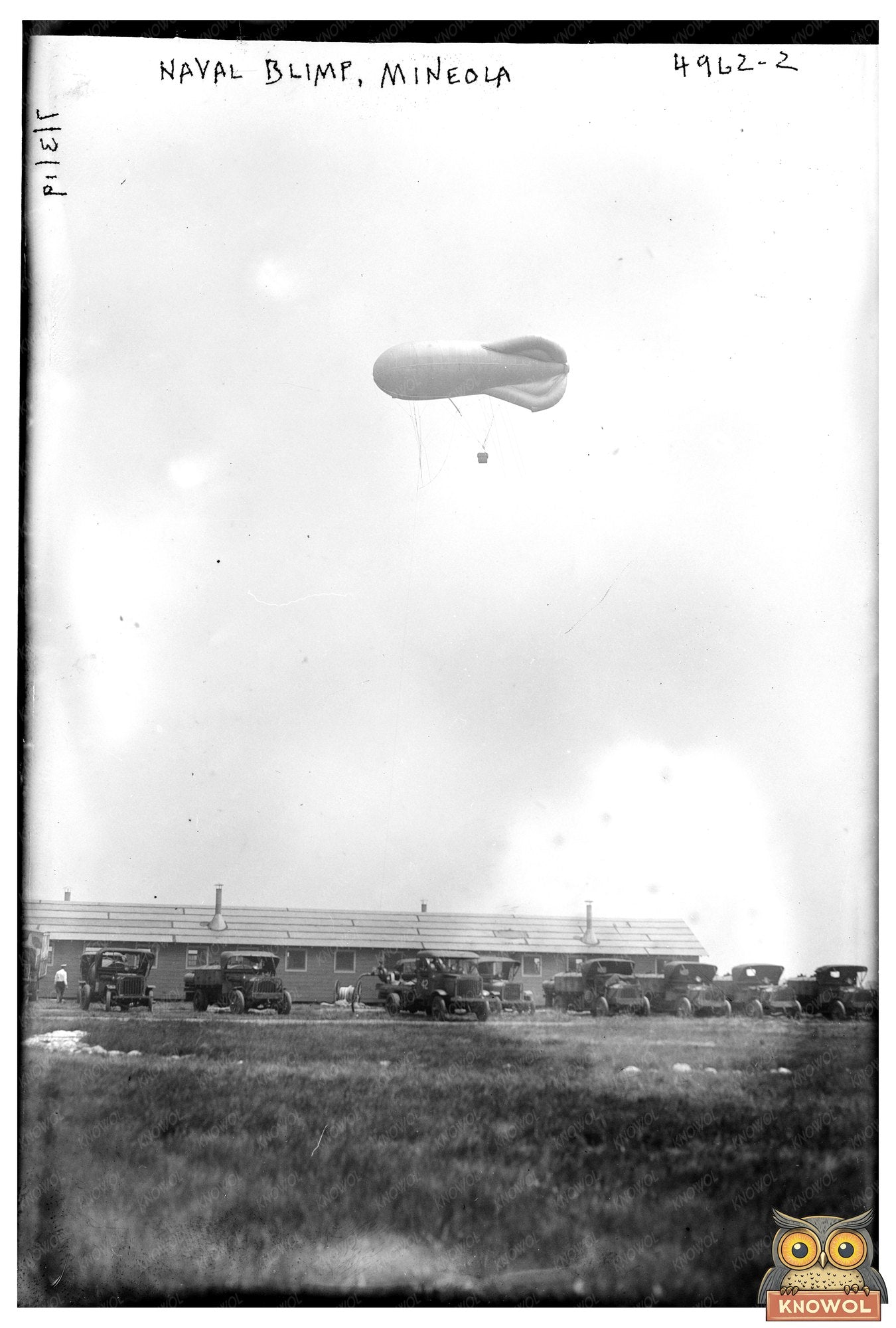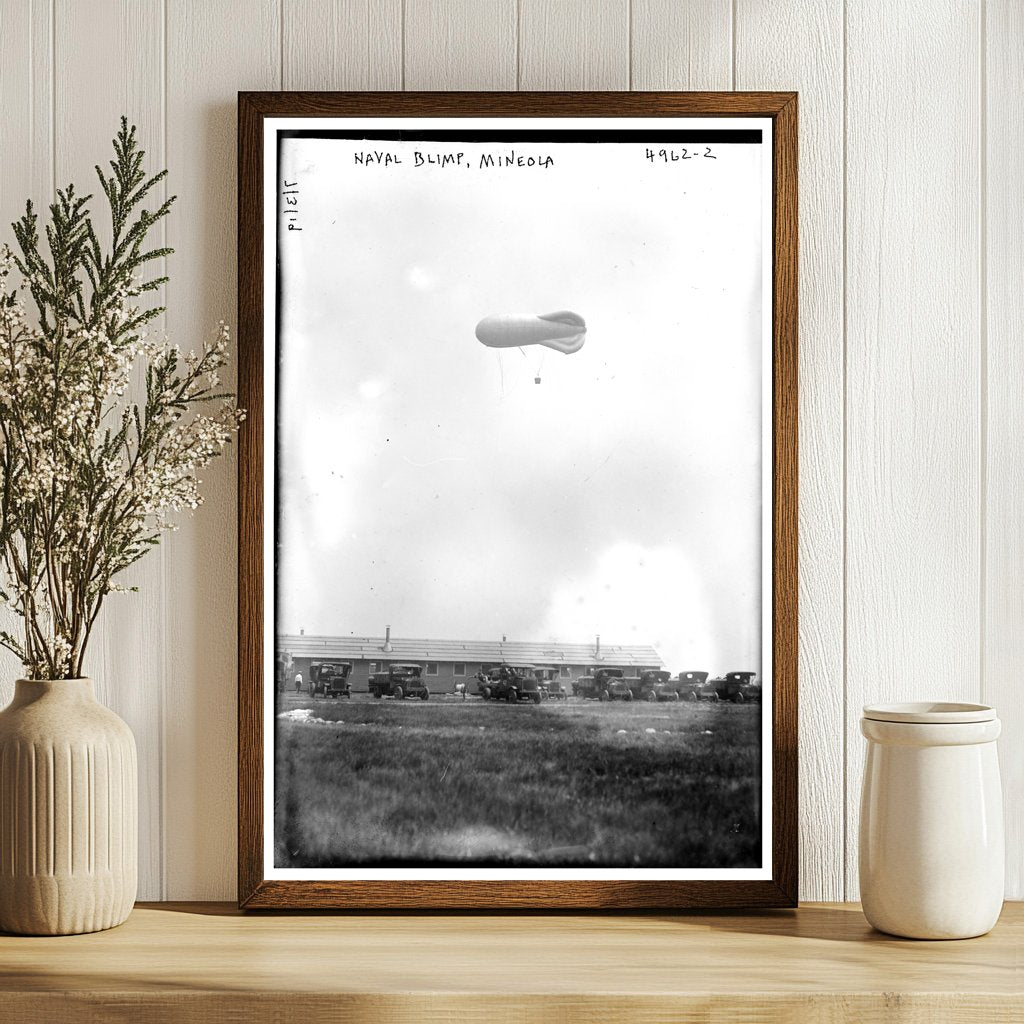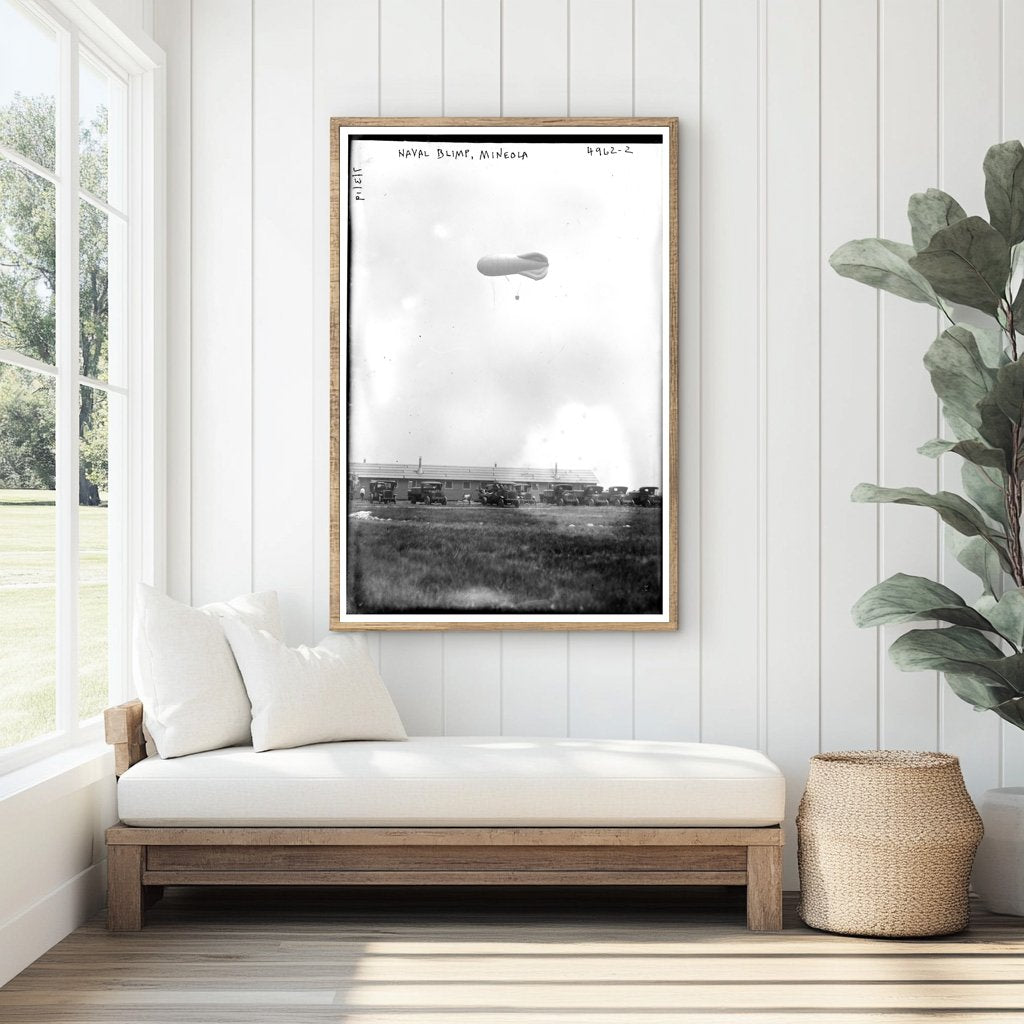


Historic 1919 Naval Blimp Tethered in Mineola
This photograph features a naval blimp, a significant innovation in military aviation, tethered at Mineola, New York, on July 3, 1919. At the end of World War I, the U.S. Navy began experimenting with lighter-than-air craft like these blimps for reconnaissance and patrol missions. The blimps were designed to provide an aerial advantage over enemy forces and were crucial for monitoring coastal areas and naval operations.
Taken by a photographer from the Bain News Service, the image captures a moment in a transformative period for military strategy. The Mineola airfield served as an important site for blimp operations and training during the early 20th century, marking a shift in how the U.S. approached aerial warfare. This photograph not only reflects technological advancements of the time but also highlights the evolving role of air power in naval warfare, laying the groundwork for future aerial innovations.

Historic 1919 Naval Blimp Tethered in Mineola
